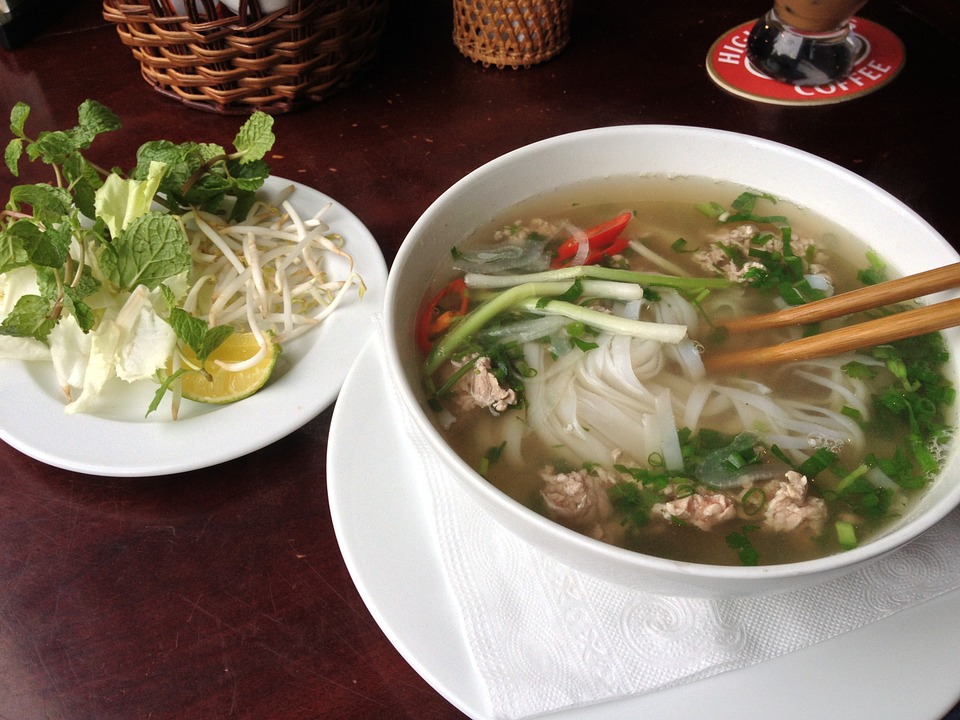Some people travel to explore, while some travel to rest and rejuvenate. There are those who go on journeys to soul-search, while there are also travellers who want to celebrate. Another huge reason people travel? To sample the world’s flavours and immerse themselves in local food. And ne of the best places to do this kind of travelling is in Vietnam.
Vietnamese food is known to be simple, flavourful, and healthy. Fresh herbs and vegetables feature heavily in many recipes from around the country. In addition, compared to other Asian cuisines, Vietnam’s is relatively straightforward. In terms of influences, it mainly features those from Chinese and French cuisines. Combined with Vietnam’s indigenous flavours and techniques, this creates a truly unique flavour profile.

If you’re booking a Vietnam tour package for your upcoming vacation, you’d be missing out on a lot if you don’t go on a Vietnamese food tour. The easiest way to do this is to look and sign-up for an organised tour. You can find plenty of these online. You can also compile your personal directory of must-try Vietnamese dishes, and go on a DIY and customised food tour. Here’s a quick list to help get you started.
Pho
You can’t have a Vietnamese food tour without pho, arguably Vietnam’s most famous dish. This soup is usually eaten for breakfast and is served practically everywhere, from the humblest food cart to the most upscale restaurant. A typical bowl of pho (pronounced “fuh”) usually consists of soft rice noodles, slices of chicken (pho ga) or beef (pho bo), along with bean sprouts and a sprinkling of fresh herbs like basil, cilantro, lime wedges, mint, and onions. Some restaurants and street vendors may also add other ingredients for more flavour and texture. What’s great about pho is that it’s cheap. It’s usually only VND 20,000 or about MYR 3.60 per bowl.
Goi Cuon
Goi cuon are Vietnamese fresh spring rolls, characterised by their translucent rice paper wrappers called banh trang. The filling consists of vermicelli noodles, pork, shrimp, basil, and lettuce. Slices of crab meat may also be added, along with coriander and other choice herbs. The result is a very subtly flavoured roll. To give it a punch, goi cuon is served with a dip made from hoisin sauce, ground chili, and peanuts. Goi cuon is usually consumed as a snack or appetiser. If you prefer something similar but fried, you can sample some cha gio instead. This is a deep-fried roll stuffed with minced pork, vegetables, and spices, although the filling can also vary depending on who’s cooking.
Bun Cha
Bun cha has three main components: the bun or vermicelli noodles, the cha or the meat (cha vien or ground pork and cha mieng or grilled thin sliced pork), and the dipping sauce made from fish sauce, sugar, and vinegar. This is considered the “soul” of the dish. In fact, Vietnamese diners can tell you immediately if the bun cha is good or bad depending on the sauce. Bun cha gained international fame when Anthony Bourdain and President Barack Obama sampled the dish in 2015. The restaurant they dined in is Bun Cha Huong Lien in Hanoi.
Com Tam
The literal translation of com tam is “broken rice,” referring to the rice grains that have been broken or fractured. Don’t worry, though, since the flavour of the rice doesn’t change even if it’s already in smaller pieces. Com tam is usually served with pork chops, shredded pork and pork skin, and fried eggs. Sometimes, grilled prawns and steamed pork can also be added as toppings. The side dish, meanwhile, is composed of pickled vegetables, sliced cucumbers and tomatoes, and nuoc cham or Vietnamese dipping sauce.
Banh Mi
Banh mi is one of the most obvious influences of the French to Vietnamese cuisine. Essentially, banh mi is a baguette sandwich with a meat or fish filling along with greens and pickled vegetables, cheese or butter, hot peppers, an omelette, and herbs. Note that most northerners keep their banh mi as simple as possible, with just the baguette, pâté, and margarine or butter. As you go further south, there will be a noticeable increase and variety in fillings.
Banh Xeo
Banh xeo is another is another French influence to Vietnamese cuisine. The dish takes inspiration from the galette, a crepe with a savoury instead of a sweet filling. A typical banh xeo comes stuffed with pork, chicken, or beef, along with vermicelli noodles, shrimps, beansprouts, and a variety of vegetables. The traditional way to eat banh xeo is to cut it into smaller pieces, roll them in rice paper or a lettuce leaf, and then dip in a rich peanut-and-pork-liver sauce.
You can finish your food tour with a serving of che ba mau or a “three colour dessert.” This is made from red beans, green pandan jelly, and yellow mung beans, which are then topped with ice and coconut cream. If you’re more of the coffee type, then go for a cup of ca phe trung or egg coffee. It’s prepared using robusta coffee, mixed with egg yolks, condensed milk, and sugar.
There are still more Vietnamese dishes to try after this list, which means you have every reason to go back to this exciting country in Southeast Asia.